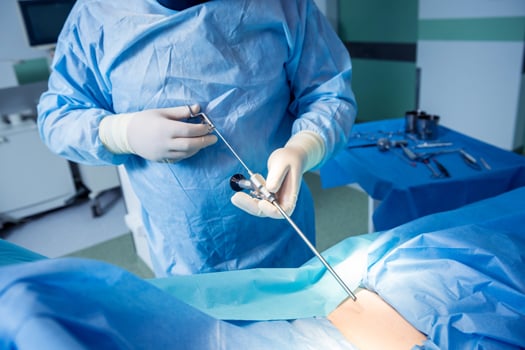
A microdiscectomy is a surgical procedure used to treat a herniated disc in the spine. A herniated disc occurs when the soft, gelatinous center of a spinal disc bulges out through a tear in the outer ring of the disc. This bulge can compress a spinal nerve root and cause pain, numbness, or weakness in the legs, feet, hips, and lower back. The goal of microdiscectomy surgery is to relieve the pressure on the spinal nerve root. This article will explain how a microdiscectomy works and what it treats.
What Is a Microdiscectomy?
A microdiscectomy is a minimally invasive form of a traditional discectomy, and it involves removing part of the herniated disc. Microdiscectomy surgery is performed under general anesthesia and typically takes about an hour to complete. The surgeon makes a small incision in the back and removes a portion of the lamina, the bony covering of the spinal canal, to access the herniated disc. Using a microscope and special surgical instruments, the surgeon removes the herniated portion of the disc, relieving the pressure on the spinal nerve root.
What Are the Benefits of a Microdiscectomy?
A microdiscectomy is a safe and effective procedure that can relieve pain and improve your quality of life. The main benefits of microdiscectomy surgery include:
- Relief from pain, numbness, and weakness – The primary goal of a microdiscectomy is to relieve the pressure on the spinal nerve root that is causing pain, numbness, or weakness in the back, legs, hips, or feet. This can provide significant relief from these symptoms.
- Increased mobility – By relieving the pressure on the spinal nerve root, a microdiscectomy can also increase mobility and reduce the risk of future back problems.
- Minimal invasiveness – Compared to other surgical procedures for herniated discs, a microdiscectomy is minimally invasive. The small incision and use of a microscope and special surgical instruments helps to minimize damage to surrounding tissues and speed up recovery.
- Shorter back surgery recovery time – Many patients are able to return to normal activities within a few days or weeks after a microdiscectomy. Physical therapy may be recommended to strengthen the back and increase mobility.
Can a Microdiscectomy Treat Sciatica?
Sciatica is a common condition that causes pain in the lower back, buttocks, and legs. It can be caused by a herniated disc or spinal stenosis (when the canal where nerves pass through becomes too narrow). If you have chronic lower back pain caused by sciatica, this may be due to inflammation around one or more discs in your spine compressing nearby nerves as they exit from between the vertebrae. When this happens, it can cause inflammation along with swelling at those points where nerves pass through openings (called foramina) into other parts of your body, such as the arms, hands, legs, and feet.
If you are experiencing sciatica due to a herniated disc, there is a good chance microdiscectomy surgery will be an option. A microdiscectomy may be recommended if you have sciatica due to a lumbar disc herniation, but not if your symptoms are caused by spinal stenosis or degenerative disc disease.
It is important to note that a microdiscectomy is not a cure for a herniated disc and does not prevent future herniated discs from occurring. In some cases, the disc may reherniate after surgery, and additional surgery may be necessary. If you are experiencing symptoms of a herniated disc, talk to your doctor to determine the best course of treatment for your individual needs.
Although microdiscectomy surgery is generally a very successful procedure, a hole is left in the outer wall of the disc. In fact, patients with these large holes in their discs are more than twice as likely to reinjure themselves by having what is known as a reherniation. These reherniations often require additional surgery or even fusions. Fortunately, there is a new treatment specifically designed to close the large holes that are often left in spinal discs after discectomy surgery. Barricaid is a bone-anchored device proven to reduce reherniations, and 95 percent of Barricaid patients did not undergo a reoperation due to reherniation in a 2-year study timeframe. This treatment is done immediately following the discectomy—during the same operation—and does not require any additional incisions or time in the hospital.
If you have any questions about the Barricaid treatment or how to get access to Barricaid, ask your doctor or contact us at 844-288-7474.
For full benefit/risk information, please visit: https://www.barricaid.com/instructions.


Comments